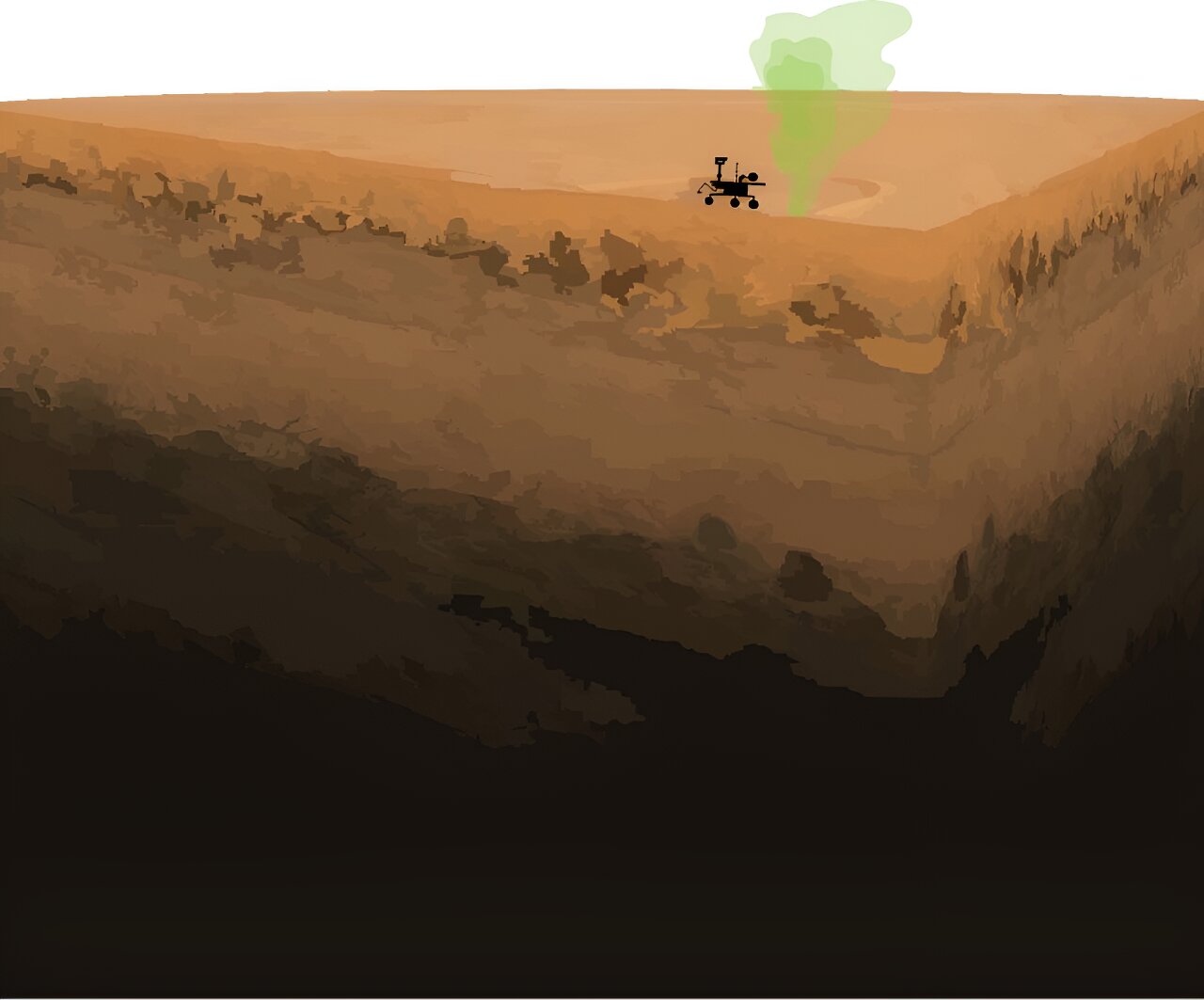Scientists are looking for the most optimal conditions for the Curiosity rover to take samples of methane coming out from under the surface of Mars. A new computer simulation showing its movement in the soil of the planet will help them in this.

Methane on Mars
Since methane was first discovered in the Martian atmosphere 20 years ago, scientists have been trying to figure out its origin and how it is transported on the Red Planet. Measurements of atmospheric samples collected by NASA’s Curiosity rover in Gale Crater show fluctuations in its level over days and seasons, but it turned out to be difficult to accurately determine the time and causes of these fluctuations.
These emissions, possibly caused by underground microorganisms, can become important evidence of the existence of life on Mars. However, sampling drains Curiosity’s limited resources, so determining the causes of fluctuations and timing for the best sampling is of paramount importance.
According to a recent study conducted by John Ortiz, a doctoral candidate in environmental engineering at Johns Hopkins University, barometric pumping could be responsible for the flow of gases from beneath the planet’s surface into its atmosphere at irregular but predictable time intervals. This natural mechanism may contain valuable information for the Curiosity mission, which is now in its 11th year.
Computer simulation of processes
Barometric pumping is a process in which fluctuations in atmospheric pressure can pull gases from underground rock pores to the surface. As on Earth, the daily changes in atmospheric pressure on Mars are largely caused by heating from the sun: cooler air has a higher pressure at night, and warmer air has a lower pressure during the day. The ground can, in fact, “breathe out” gases such as methane, pushing them to the surface through cracks when atmospheric pressure is low, and pulling them back underground when air pressure is high.
For their study, the researchers used computer models to simulate how gases move beneath the surface of Mars, as well as how they mix in the atmosphere. They then compared the simulated methane concentrations with measurements from the Curiosity rover. Because the weather and atmospheric pressure on the Red Planet are much less chaotic than on Earth, the researchers could make predictions about atmospheric methane levels over time.
Research results
One of the important results of the researchers’ computer simulations was the release of methane just before sunrise on Mars. This information can help Curiosity conduct a series of experiments on sampling the atmosphere as part of the ongoing campaign to study fluctuations in the methane content in Gale Crater.
The scientists’ work suggests several key time frames for data collection that the Curiosity rover can use. Scientists believe that they provide the best chance to limit the fluctuation time of methane and hope to bring us closer to understanding where it comes from on Mars.
According to phys.org
Follow us on Twitter to get the most interesting space news in time
https://twitter.com/ust_magazin


